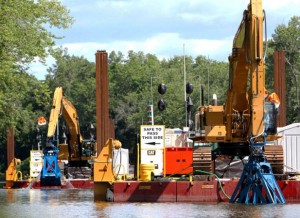
One of the things that are well known when t comes to New York is the Hudson River, which is a long, majestic river – or, we could say it used to. Ever since the 1900s, as cities appeared along its length, and industrialism took over its waters, it has become a toxic garbage dump.
The Hudson River used to be a very important travel route for European settlers back in 17th century. For 200 years humans have been throwing their trash, chemicals and more in there. In the early 1900’s, the river looked as a sea of trash within 15 miles of Manhattan. In the 1960s, the river below the Troy dam looked as a swamp of human waste, filled with fungus, oil, dead animals, and smelling of sulphide.
PCBs (Polychlorinated biphenyls) are in the top pollutants of the river. It was used in some industries until it was banned in 1977. These chemicals are carcinogens and have awful impact on foetal development and neurogical functioning, and have left a long lasting transmittal effect in the food chain because of the fish.
They don’t disappear with the death of the carrier, and their contamination spreads easily. They can also be stored in sediments.
In 2002, however, the EPA forced General Electric to clean up the river from PCBs. For twenty years, they have dumped about 1, 3 million pounds of these chemicals in the Hudson River. The PCBS is expected to be removed completely in 2020.
Another problem chemicals in the river are toxins as mercury, cadmium and strontium-90. As with PCBs, they have a lasting presence in the food chain, and come from either industry, medicinal devises or old batteries, which used to contain mercury and cadmium. Nuclear energy generators produce strontium-90. Other water pollutants range between heavy metals, pesticides, urban runoff, and sewage. CSOs (Combined Sewage Overflows) are a huge problem, since there are 460 CSO outfalls in New York City, which spill countless gallons of sewage in the Hudson River.
In the 1960s appeared many organizations whose effort is to protect the river from pollution, the river’s biodiversity and also cleaning of the river. Such are the Clearwater organisation or the Riverkeeper. More is needed, however. All activities concerning the river must be monitored by the government and citizens, if there should be any change of cleaning the river up and remediating the damage.
